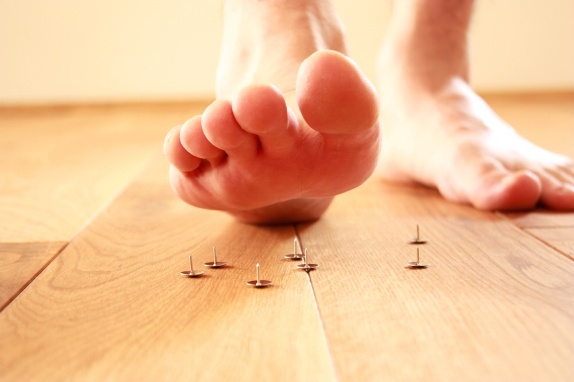Plantar Fasciitis
About Plantar Fasciitis

The Plantar Fascia is a dense tissue in the bottom of the foot that attaches from the bottom of the heel bone to the toes. The Plantar Fascia serves to help hold up the arch when walking.
Another function of the Plantar Fascia is to stabilize the great toe joint while walking.
A Heel Spur is a calcification of on the bottom of the heel. The spur is caused from abnormally increased tension on the Plantar Fascia pulling against the heel bone. The bone spur points forward towards the toes, not downwards towards the ground. It is rare that the spur itself causes pain. The spur is a symptom of the problem, not typically a cause of pain.
Causes of Plantar Fasciitis
Plantar Fasciitis is caused from a variety of problems that affect the way the Plantar Fascia functions.
Several factors can trigger Plantar Fasciitis which including:
– High impact activities
– Moderate to severe weight gain
– Improper footwear
The thing to remember is that these are potential triggers, not typically causes on their own. It is the way that our feet respond to these stresses that cause Plantar Fasciitis. When we walk and stand, the Plantar Fascia tightens to help hold up our arch and pulls on our great toe joint to prepare it to bend as we roll forward on our toes. If there is anything that causes the arch to flex more than it should or the great toe joint to be restricted, the plantar fascia will have increased tension and can eventually become injured.
The most frequent causes of Plantar Fasciitis include:
– Feet that collapse inward while walking/running
– High arched feet
– Tight calf muscles
– Restriction of the great toe joint
Symptoms of Plantar Fasciitis
Pain is located in the heel and/or arch of the foot and typically develops gradually.
The pain can feel like:
- stabbing
- aching
- bruised sensation
Many feel intense pain for the first few steps after resting. This pain typically diminishes after walking and stretching the foot out for a few minutes.
Increasing pain with standing and walking for prolonged periods is also very common.
Treatment of Plantar Fasciitis
There is not any one treatment that will cure Plantar Fasciitis. The majority of all therapies fall into one of three categories:
Reducing Inflammation
- Ice
- Medications (eg. Advil)
- Cortisone Injections
Stretching
- Massage
- Stretching Calf Muscles
- Night Splints
Foot Support
- Orthotics/Insoles
- Proper Footwear
- Taping Bracing
Not all treatments are appropriate for all people with Plantar Fasciitis.
You should always consult your Calgary podiatrist to make sure you are diagnosed accurately, and to implement the most effective treatment plan. The most important thing to remember in treating Plantar Fasciitis is diligence and patience. Some people when they follow a strict treatment plan will take months to improve and others weeks.
Our goal at Alberta Family Podiatry is to help you understand your condition and get the most effective treatment options available.